Archived Why SERVPRO Blog Posts
SERVPRO Offers Expert Document Restoration Services
8/11/2022 (Permalink)
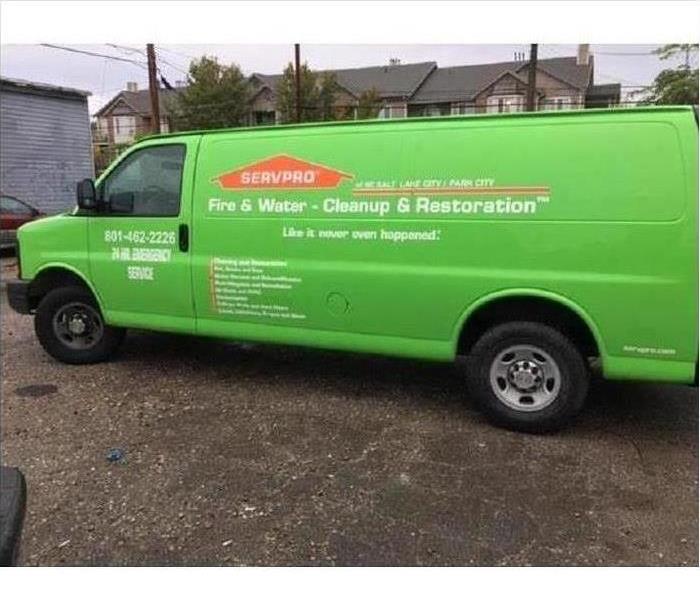 SERVPRO of NE Salt Lake City can tackle any project size.
SERVPRO of NE Salt Lake City can tackle any project size.
A significant water, sewer or flood event can damage all your essential documents and files. If recovery is going to happen, it needs to start right away. SERVPRO understands this and operates a secure document restoration facility. Professionals there control the process and give your documents the treatment they deserve.
Different Types of Documents Require Different Responses
Not all documents have the same level of importance. Not all records are paper. Not every document needs restoration. Each document gets an appropriate level of treatment. The specific treatment depends on the document’s type and importance. Here are some examples of the types and the treatments they might receive:
- Important documents need restoration. An important document has an original signature, hand-written notes or an official mark. If a copy won’t do, it’s important. A special freeze-drying process performs document drying. Gamma irradiation sterilizes these documents when bacteria and other contaminants are a concern. Examples of important documents would be:
- Mortgages
- Wills
- Stock, bond and other certificates
- Blueprints
- Maps
- Books and manuscripts
- Irreplaceable legal documents
- You can digitize less critical documents. In most situation, it’s not the document that is important. It is the information on the document. In these cases, it is more cost-effective to digitize and reprint the document. An alternative is to digitize and reproduce it when needed.
- Some documents are not paper-based. Developed films and x-rays may seem undamaged but still, require cleaning. The same applies to microfiche and microfilm. Photographic prints may pose a challenge to the document restoration specialists.
- Medical records require special treatment. SERVPRO’s HIPAA Master-Certified technicians perform this cleaning. Round-the-clock surveillance of the restoration activity ensures confidentiality.
Perhaps a flooded basement destroyed your home office in the Salt Lake City, UT, area. Maybe a roof failure at work soaked the company accounting records. The amount of damage doesn’t matter. The document restoration experts at SERVPRO tackle projects of any size.
What You Should Know About Water Damage
6/13/2022 (Permalink)
 Follow our tips and Know more about Water Damage.
Follow our tips and Know more about Water Damage.
Water damage involves apparent (and not-so-apparent) destruction that comes from the presence of water in places that it shouldn’t be, especially for an extended length of time.
Damage can range from something as minor as a leaky water line to a refrigerator to something more catastrophic such as flooring or sewage backup.
Unattended water issues can impact building materials, compromising the structural integrity of your home. Water also creates the right environment for the growth and spread of mold. Cleaning up water quickly is an important part of taking care of your home.
Categorizing Water Damage
Damage from water falls into three categories, based on the source and severity of contamination:
Category 1:
The least severe category of damage, this water usually comes from broken pipes or overflow of a sink. Category 1 water is free of toxins and sewage, and usually the places impacted are also clean. Sometimes this water is called clean water.
Category 2:
Water in this category probably contains some contaminants and should be cleaned as quickly as possible. Also known as grey water, this damage usually comes from toilets (without feces), sump pump backups, and discharge from appliances such as dishwashers and washing machines that clean dirty objects. Clean water that has been standing around for more than 48 hours can become category 2 water.
Category 3:
Also known as black water, this category includes water that is severely contaminated with bacteria, fungi, and other microbes. Category 3 water sources include toilets containing feces, groundwater, outside flooding, and sewage backup among others.
Grey water that hasn’t been removed or cleaned in 48 hours should be handled as black water.
While clean water can usually be safely handled through drying, different types of water damage require approaches. Because this damage can lead to severe problems, it’s important to reach out to your nearest SERVPRO franchise in Salt Lake City, UT to professionally clean and remediate damage in any category.
Understanding the Cleanup Process
Generally, the water cleanup process should include the following steps, some of which should be left to the professionals:
- Shut off the water: Before you do anything else, make sure to stop the flow of water when applicable. Turn off the main supply to your home before proceeding further.
- Turn off the power: Electric and electronic items may be affected by water damage. It may not be safe to unplug items, so cut off the electric supply to affected areas using your breaker box.
- Check for mold: Mold may be visible on some surfaces. You may also detect a musty order. Because mold can grow and spread under floors, behind walls, and in ceilings, your professional damage restoration provider is equipped to remove structural elements to assess the extent of the spread.
- Remove the water: Remove excess water with buckets, vacs, or through drying, where possible.
- Remove damaged objects: Water-soaked carpet, drywall, insulation, and other materials should be physically removed.
- Disinfect and sanitize: Grey and black water involve contaminants that should be thoroughly cleaned.
Water damage is serious business at your home in Salt Lake City, UT. The longer it’s left unaddressed, the bigger your problem. Reach out to the professionals who are equipped to return your home to pre-damage conditions with special approaches to cleaning, drying, repair, and reconstruction.
Does Your Homeowner's Policy Cover Water Damage?
5/7/2022 (Permalink)
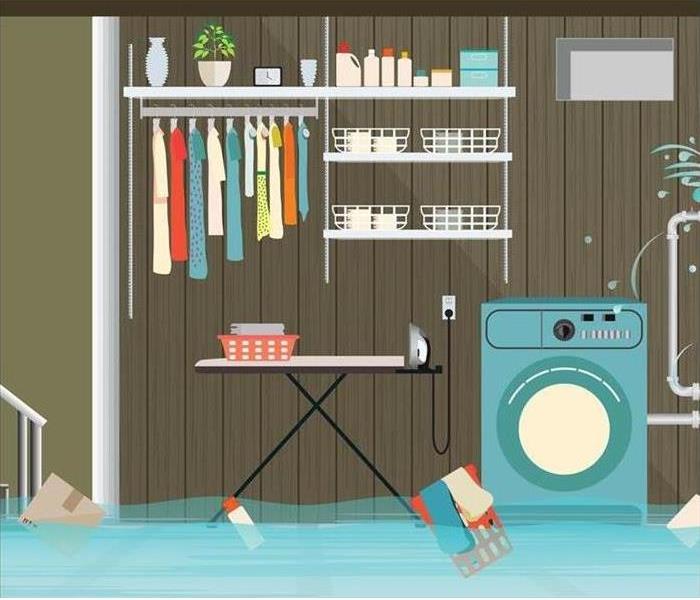 Learn more about Your Homeowner's Policy by following Our Tips.
Learn more about Your Homeowner's Policy by following Our Tips.
Many homeowners who experience a basement flood or water damage are concerned about the cost for a remediation and restoration company in Salt Lake City, UT. However, while the general thought is that your insurance coverage will not cover water damage, that is likely not entirely accurate.
Most homeowner's policies will cover some water damage, but it is vital to know the specifics surrounding each situation, those covered and not.
4 Situations That May Need Insurance Coverage
- Accidental and Sudden
Most insurance companies will cover accidental or sudden water loss. Therefore, if you experience a pipe break or if your water heater suddenly failed and flooded your basement, your policy will probably cover some of the resulting damage, like structural issues or drywall damage. However, not every plan will include the damaged component or appliance that caused the problem.
- Unresolved Maintenance Issue
Nearly all insurers will refuse to cover unresolved maintenance issues that result in a basement flood. If you know about a leak, or if you have an appliance that is well past its prime, then you will likely have to pay for any resulting damage.
- External Flood
If you live in a flood zone, or if you are concerned about the possibility of a flood, make sure you have flood insurance. A standard homeowner's policy will not cover flood damage. While most homeowner's plans will not cover flooding, if you are in a flood zone, it is a possibility that flood coverage is regulated and required.
- Outside Source
Sewer backups or other external causes for internal water damage are also likely not covered by your homeowner's policy. Check with your insurer to be sure.
It is vital to know what you are protected against through your standard insurance plan. If necessary, you can purchase more coverage from other insurers to ensure that your home is protected against a basement flood.
If you have concerns about your protection needs, consider talking to a remediation company in your area. They can assess your property and give you advice about possible mitigation and preventative steps you can take.
Safely Use a Plumber's Snake To Fix Your Clogged Pipe
4/21/2022 (Permalink)
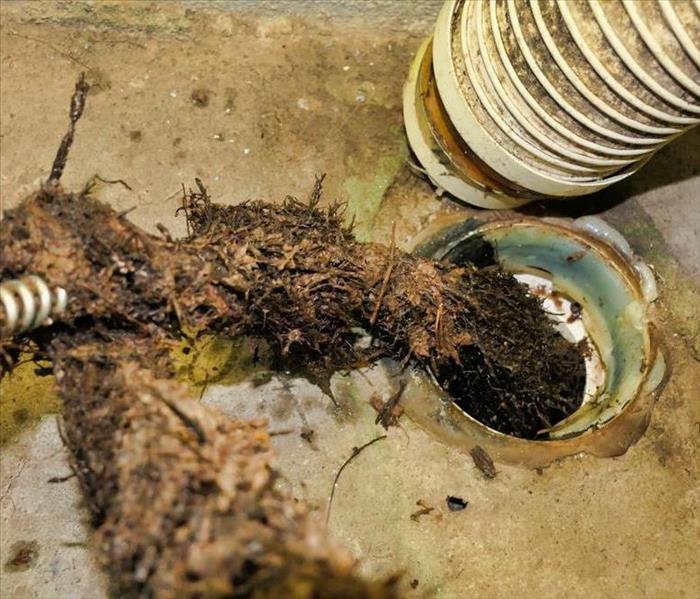 Learn how to Safely Use a Plumber's Snake so as to Fix Your Clogged Pipe.
Learn how to Safely Use a Plumber's Snake so as to Fix Your Clogged Pipe.
A clogged pipe can quickly lead to water damage and the need for repairs. In Salt Lake City, UT, SERVPRO professionals respond Faster to Any Size Disaster, helping you avoid serious disruptions to your normal schedule. Sometimes, however, clearing a clog on your own is possible.
How To Snake Your Clogged Pipe
Clearing the pipes may be a messy chore, but it prevents more significant trouble, such as a pipe break or sewer system backup. To get started, you'll need a few tools:
- Plumber's snake
- Bucket for garbage
- Rags for cleanup
- Gloves and goggles for your comfort and protection
Most drain snakes are generic and can be used for multiple drains and pipes. However, there are some snakes specifically for toilets or showers. If you have questions, ask for advice from an experienced plumber or property maintenance professional. Once you've gathered your tools, clear the area and spread out rags to protect the floor from water damage.
Try Other Options
Before pulling out your plumbing snake, you could try other methods of unclogging the drain, such as a combination of baking soda, vinegar, and boiling water. This mixture may dissolve a variety of organic clogs. You could also try using a plunger, forming a vacuum seal, and pulling out the obstructions.
Remove Visible Obstructions
Pushing the snake into your drain often results in shoving stopped objects further into the pipes. This can compound the clog rather than clear it. Before taking this step, pull out all of the objects you can see. This includes hair, food, and other items that shouldn't be in the drains:
- Fats, grease, oil
- Soap buildup
- Hard water minerals
- Inappropriately flushed items
Understand How the Snake Works
A plumbing snake consists of a handle, a flexible pole, and a rotating auger. As you slide the snake into the drain and connecting pipes, rotate the handle. This extends the tool up to 50 feet long. As the auger turns, it should break through blockages, loosening the clogged materials and allowing the debris and the water to flow through as intended.
When you feel resistance, you may have reached a corner or the obstruction. Move the head back and forth and from side to side. The snake should turn the corner or break through the clog.
If the head is stuck or if you hear a scraping sound, use the handle to retract the snake. Either the obstruction will come back with the auger, or you can try one more time. It may be necessary at this point to contact a plumber to remove the obstruction. It is possible to damage your pipes with a drain snake, so don't proceed if you aren't sure of yourself.
Perform Routine Maintenance
In general, using a drain snake is a task you perform after a clog has formed, and it's pretty common to use the tool once or twice a year. However, proper maintenance and system assessments are important steps in enjoying a smoothly operating water system. The cleanup and repair professionals at SERVPRO can help you recover from water damage. With consistent maintenance and attention, you can avoid many clogged pipes and related troubles.
Dealing With Flooding in a Commercial Basement
4/8/2022 (Permalink)
 Follow our Tips and Learn More about how to deal With Flooding in your Commercial Basement.
Follow our Tips and Learn More about how to deal With Flooding in your Commercial Basement.
Commercial basements offer plenty of storage options, but knowing the possibility of a basement flood should make any owner question what they store in the lower level of their building. If you happen to have a flood, you should contact a water restoration service in Park City, UT, to assist in recovery. These services will typically come at a flood in a three-step process:
- Water removal
- Debris Removal
- Restoration
However, before contacting a professional service, you might want to contact your insurer to discuss your commercial insurance coverage. Depending on how the flooding occurred, it is possible that your policy could cover a significant portion of the restoration.
- Water Removal
The primary concern is the standing water in your facility’s basement. The longer it sits, the more problems can arise. The sooner a remediation service can get to your property and begin removing the water with shop vacuums, pumps, and pump trucks, the better.
When the water is removed, the service will attempt to dry out the basement as quickly as possible using fans, air movers, and dehumidifiers. Quickness is essential to reducing the risk of mold.
- Debris Removal
After a basement flood, many business owners have an instinct to salvage, but salvaging items might be impossible or irrational depending on the type of flood. The consensus among the restoration community is that any appliances or porous items touched by gray or black water should be discarded. Appliances might also need to be thrown away if submerged in clean water.
- Restoration
Once the flooded area is dry, and debris cleared away, the restoration company can begin making structural and cosmetic repairs. When this phase is complete, a business will look as it did before the disaster.
A basement flood at a commercial facility is something that requires immediate attention. Contact your insurance company to learn about your coverage, and reach out to a remediation service to understand your options.
6 Steps To Take After a Basement Flood
11/11/2021 (Permalink)
 Call us to help you to deal with your basement flooded and minimize the damage.
Call us to help you to deal with your basement flooded and minimize the damage.
Heavy rains or overflowing streams and rivers can lead to a basement flood. If this happens to you, it is important to take steps to minimize the damage.
6 Things To Do When You Have a Flooded Basement
Mold can begin to grow in 24 to 48 hours, so quick action is needed to prevent additional damage. SERVPRO professionals are Faster to Any Size Disaster. A SERVPRO franchise in Salt Lake City, UT, can help you get your basement dried out before mold becomes a problem.
1. Remove the Water
If you only have a few inches of water in your basement, you can probably extract it with a wet vac. A more significant basement flood may require professional equipment. You may be able to rent submersible pumps, but if your flooding is the result of a large storm, chances are everyone else is trying to get ahold of this equipment also and it may be hard to come by. Consider contacting a water remediation company instead.
2. Dry Your Basement
Once you have the water out, you need to quickly dry your basement and its contents to avoid the potential for mold growth. Dehumidifiers and fans can help circulate and dry the air. Running your air conditioner may also help. Remove wet contents and discard or allow to dry outside.
3. Clean the Floor
Floodwater can leave dirt, silt and contaminants behind. Clean your basement floor with a solution of one cup of chlorine bleach mixed with one gallon of water. Wear protective eyewear and rubber gloves and make sure you open doors and windows for ventilation.
4. Freeze Documents
Your basement isn't the best place to store valuable documents because of the flood risk, but if you have papers that got wet, put them in the freezer. This may prevent mildew from growing and keep the documents from deteriorating until you can take them to a professional for restoration. Prevent future problems by moving valuable possessions out of your basement and putting anything you store in there in plastic bins on concrete blocks, instead of cardboard boxes on the floor.
5. Inspect and Clean Gutters, Drains, and Downspouts
Clear any twigs, leaves, or mud from your basement drains. Remove the drain screen and clean it. If the drain is clogged, use a plunger or plumber's snake to unclog it. Clean your gutters and downspouts and make sure they are pointed away from the foundation of your home.
6. Call Your Insurance Company
Most homeowners' policies have an exclusion for flood damage, but if you purchased a separate flood insurance policy, you may have insurance coverage. Talk to your insurance agent or call the claims center to file a claim. If the water in your basement is from a broken pipe or supply line, the water damage may be covered as a sudden and accidental discharge of water.
A basement flood can be a hassle to deal with. However, if you have a plan in place, you can systematically work through the problem until it is resolved while minimizing the amount of damage to your home.
Reasons To Make SERVPRO a Preferred Vendor
9/28/2021 (Permalink)
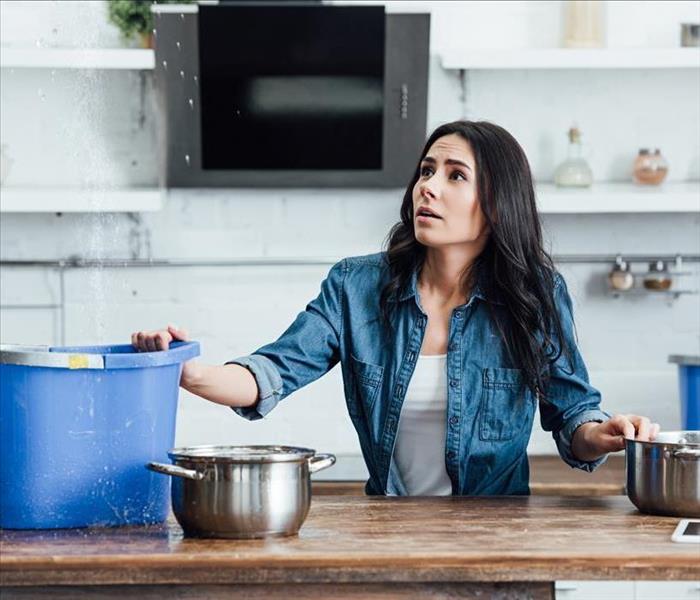 If you see water damage in your Park City, UT home, contact your insurance agency to get help.
If you see water damage in your Park City, UT home, contact your insurance agency to get help.
Few things can cause as much damage to your clients' homes in as little time as excess water. They need a restoration team they can depend on to be there quickly to start the cleanup process as soon as possible. The water damage mitigation experts at SERVPRO in Park City, UT, are ready to provide fast, 24-hour response, seven days a week, and this is one of the many reasons that SERVPRO is a preferred vendor for many insurance agencies.
Damage Timeline
Water doesn't waste any time destroying a structure. A lot can happen to a flooded home within the first 24 hours:
- Saturated walls start to bow and deteriorate
- Insulation is ruined
- Hardwood floors start to buckle
- Carpets are stained by furniture or other items that bleed onto them
- Mold begins to grow
- Wood furniture starts to swell and splinter
- Documents and keepsakes are drenched
With each hour, the damage gets worse. Your clients need a team known for its fast response time so that no matter how much water gushes into their homes, the destruction is kept to a minimum.
Quick Attention
With a 24-hour call center ready to mobilize the local team any time of the day or night, SERVPRO outshines the competition. Technicians are alerted and respond to the first notice within an hour of the call. Within four hours, the team is on-site at your client's home, assessing the problem and detailing what needs to be done to fix it. The lead specialist is ready to confer with your clients to outline what the cleanup process is going to look like and give them an estimate of the cost within eight hours of the initial contact.
Thorough Restoration
Because SERVPRO is always open, the technicians can get right to work after the assessment is complete. They start by extracting all the excess water with industrial pumps and other drying techniques. Then they tear out damp insulation, waterlogged drywall, and ruined carpets that can't be salvaged.
Once the parts of your clients' home that the flood destroyed are removed, the specialists repair what's left. If the water was contaminated, they disinfect the affected area to remove any bacteria or other microbes present. Then they make sure that every part of the remaining structure is dry to prevent secondary damage such as mold or mildew.
The final step is restoration. Your clients are unlikely to be satisfied unless the house looks the same way it did before the water damage occurred. The team rebuilds the structure and matches the walls, ceiling, and flooring with the elements that remain for a seamless finish. When you partner with SERVPRO, you can rest assured that your clients are getting the best and most thorough service on the market.
With 24-hour service and a commitment to quick response times, it is no wonder that many insurance providers choose SERVPRO as a preferred vendor for their clients. A team of certified, experienced specialists can be on-site within hours of receiving the first call, and they do not stop until your client's home is completely restored.
3 Steps To Take After Water Damage
7/27/2021 (Permalink)
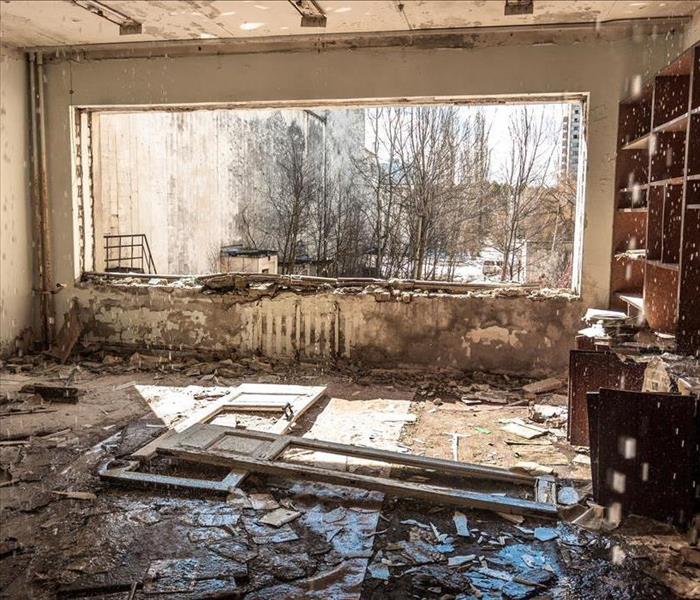 A flood in your Salt Lake City, UT, home it's a severe problem. It must be treated as soon as possible.
A flood in your Salt Lake City, UT, home it's a severe problem. It must be treated as soon as possible.
If you have water damage in your home from an overflowing toilet, leaking pipe, or a flood, you may be wondering what steps you should take. These three tips will get you started.
1. Contact Your Insurance Company
Most homeowners' policies cover damage for sudden and accidental discharge of water, such as damage caused by broken pipes. However, flood damage is often excluded, unless covered by a separate flood policy. Contact your insurance company as soon as possible to get the claims process started. Take photographs of the damage. Keep any receipts for temporary repairs made before the claim settlement.
2. Dry Out Your Home
If it is safe to enter your home, begin water damage restoration within 24 to 48 hours. Waiting longer than this can lead to future problems, such as mold growth. Wear protective gear and have the electricity and gas shut off to your home. Open windows and doors to increase air circulation. Remove wet items, such as carpet and upholstered furniture. Other materials, such as drywall, insulation, and flooring may also need to be removed. If you have extensive damage, consider contacting a restoration service in Salt Lake City, UT, for assistance.
3. Check for Mold
The faster you can perform water cleanup and dry out your property, the less chance there is of mold, but it can be difficult to completely avoid the problem. If you notice musty odors, brown, green, or black stains, or other signs of mold, you may need to have mold remediation done to remove the problem before it gets worse. Mold tends to grow in places with high humidity. Keep humidity levels down by using fans, air conditioners, and dehumidifiers.
A small area of water damage may be cleaned up with a mop and bucket. However, more extensive damage may require days or weeks to fully restore. The faster you begin the process, the better your chance of avoiding additional damage will be.
How Electronic Records Can Help Insurance Companies
6/28/2021 (Permalink)
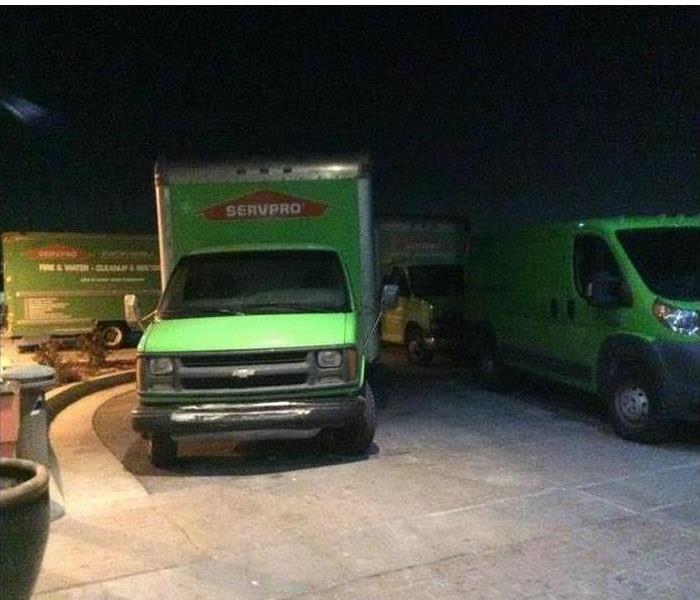 Electronic records can help insurance companies.
Electronic records can help insurance companies.
Processing an insurance claim may have many steps, but it doesn't have to be a hassle. When you choose certified remediation specialists who use electronic records to store information about your cases as your preferred vendors, processing a claim can become quite simple. Everything you need to know for your claims is right there. Electronic records make it easier to find the information you need and access them efficiently.
Electronic Records Can Help Insurance Companies
Easy To Search
When you work with a company such as SERVPRO, you have access to all the information you need at any time of the day. The Claims Information Center makes it easy to search locally, regionally or nationwide for:
- Type of claim
- Job cost
- Cause of loss
- Response times
You can also find the information you need for your client's insurance claim, including an itemized list of losses and a detailed account of the entire remediation process from assessment to restoration. You can log on at any time to see exactly what the process looks like for your client's home.
Easy To Share
Another benefit of electronic records is that they are easy to share. Gone are the days when clients must wait for paper documents to be filed and mailed to the insurance agent. The report can just be sent via email. This is especially helpful if more information is needed. Rather than putting the payment on hold until all the necessary documents make it through the mail, you can retrieve information instantly. It cuts down on the time it takes to process claims, which in turn helps everyone get paid more quickly.
Processing an insurance claim is much easier with SERVPRO's CIC. You get all the information about the repairs that your clients in Park City, UT, need just by logging in and finding the files. Electronic records help agents and insurance companies by making the claims process more manageable.
Tips for Cleaning Up After a Sewage Flood
5/6/2021 (Permalink)
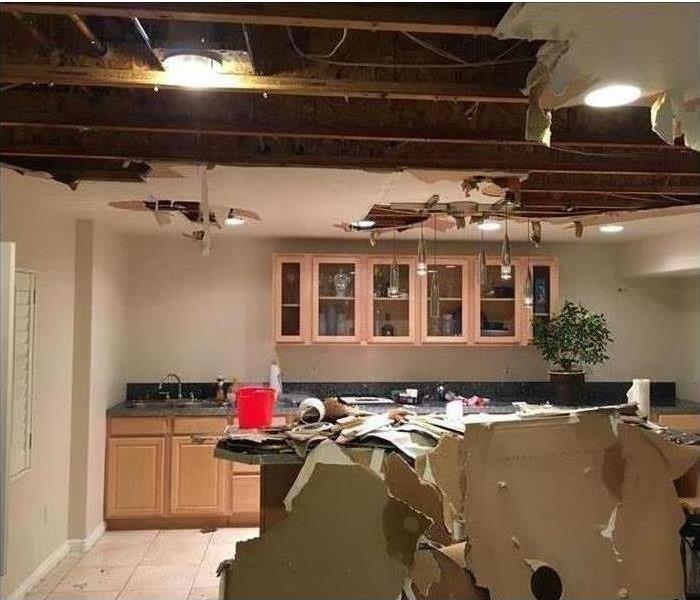 Ceiling damage from water loss in Salt Lake City, UT home.
Ceiling damage from water loss in Salt Lake City, UT home.
There are some possible disasters you can prepare your Salt Lake City, UT, home for, but one that might catch you completely unprepared is a sewer flood. These floods can happen when weather conditions back up your neighborhood’s sewer line and then back up out of your toilet. You will likely need the assistance of a professional sewer cleanup crew to rectify this issue, but there are a few actions you can take to ensure your family and the remainder of your home stays safe.
3 Tips to Clean Up After a Sewage Flood.
1. Do Not Touch the Flood Water
After a sewer backup, the water that flows from your toilet is likely contaminated and is what professionals call “black water.” It may contain human and animal feces, sewer chemicals and other biohazards. Seal off the nearest door and avoid touching any of the water with your bare hands. If you must block water with towels or other absorbent material, wear thick rubber gloves and a breathing mask to protect yourself.
2. Clear the Outdoor Area
Once the sewer cleanup crew arrives, they may bring one or more large tanker trucks and other vehicles that transport sump and trash pumps that will help them drain away the contaminated water. Try to give them plenty of room by moving your cars and other objects that might block their way. Prevent children and pets from roaming too close to the vehicles once they arrive.
3. Ask About Deodorizing Services
A flooded toilet can cause unpleasant sewer smells to linger, even after the water is gone. However, a professional cleanup crew might have several options for deodorizing your home. This service goes a step beyond cleaning, as the processes these professionals use are unique and clean the air as well as your home’s floor and walls to ensure unwanted odors do not return later.
When sewers malfunction and cause a flood in your Salt Lake City, UT, home, it can be distressing. However, a professional sewer cleanup crew can give you peace of mind when it comes to draining away the water and leaving your home smelling clean and fresh once more.
Dealing With the Aftermath of Water Damage
4/30/2021 (Permalink)
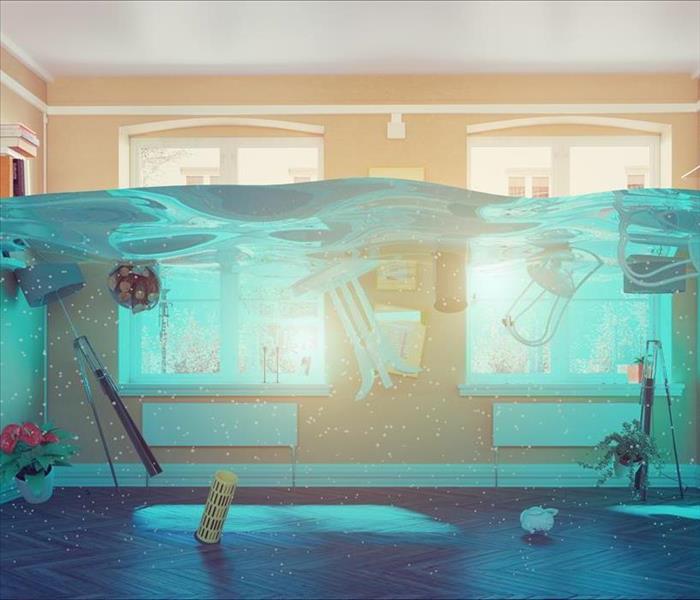 Water damage can lead to severe damage if not treated right away.
Water damage can lead to severe damage if not treated right away.
The aftermath of water damage on a residential property can be devastating for unsuspecting homeowners. It is easy to look at a flooded living area and feel like all is lost, but fear not, the damage is not typically as bad as it seems. However, as with any natural or manmade disaster, you need to take action to limit the loss. Every homeowner should take three steps to protect their property after a water problem.
3 Steps To Deal With The Aftermath Of Water Damage
1. Mitigate Further Damage
Whether the damage is the result of an exterior flood or broken pipes, you should try to limit as much damage as possible. In fact, many insurers require homeowners to take mitigative action to prevent further loss. You can turn off the water supply to your home or the affected area, put out buckets for a leaky roof, or call for assistance.
2. Contact Your Insurer and a Mitigation Specialist
When water damage occurs, your first phone call should be to your insurance company, notifying them of the problem. The insurer will typically schedule a time for an insurance adjuster to come out and assess the property.
Beyond the insurance company, contact a water restoration service in Salt Lake City, UT, for an emergency assessment. The company will send out a crew to inspect the property and offer any mitigation services to limit damage to your house.
3. Document the Loss
Before the restoration service gets too far along in the water cleanup process, you should take pictures of the damage. Most insurance companies will want homeowners to create a statement of loss and having photographs to prove damage help speed up the claims process.
No homeowner wants to deal with water damage, but if you have to, it pays to know how. The three steps above are not exhaustive. For more extensive information, you might consider contacting your insurance representative or a water restoration specialist.
How To File a Flood Damage Claim After the Disaster
2/11/2021 (Permalink)
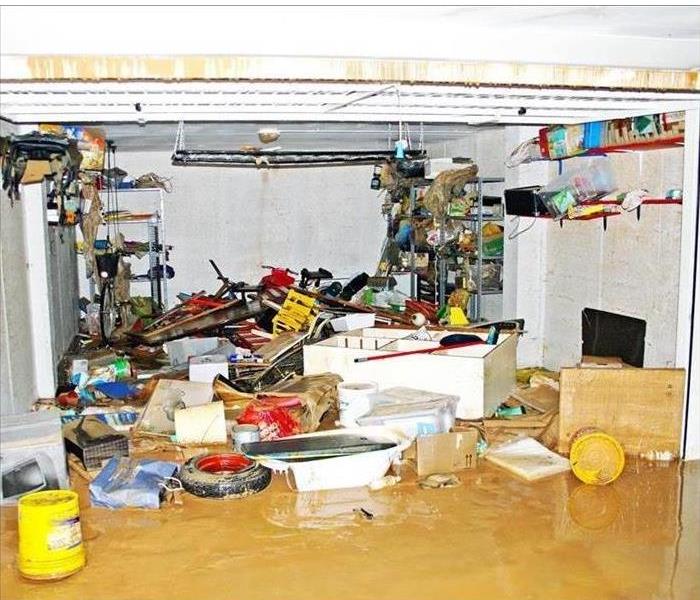 Flood damage in Salt Lake City, UT.
Flood damage in Salt Lake City, UT.
If your home in Salt Lake City, UT, was flooded by a natural cause or disaster, it’s time to file a flood claim. This can help you get the funding you need to recover from the damage. However, filing an insurance claim can be confusing. Here are three things you can do to successfully make a claim.
Three Things To Do To Make a Claim
1. Start the Process
The first thing you can do is notify your insurance agency of the flood. Do this as quickly as possible so that an adjuster can contact you within the next few days. You can discuss what action to take and what you should be doing on your end while you wait. Be sure to have the name of your insurance, the policy number, and your phone number ready.
2. Document Everything
Next, photograph the damage. It’s important to document everything that was damaged during the flood so that you have evidence of what losses you suffered. Take pictures and videos of your entire home. You can also make a list of damaged or lost items and use that in your flood claim. Don’t forget to place damaged items outside to prevent mold growth within the house.
3. Back Up Your Claim With a Proof of Loss
With the help of your adjuster, you can create a Proof of Loss to prove that you are claiming the correct amount of money. This contains specific details concerning the damage from the flood and must be filed within 60 days of the disaster. Once you and your insurance company agree on the amount, the claim payment should come.
Insurance can be beneficial when dealing with the water restoration process, and filing a flood claim doesn’t have to be complicated. By carefully and concisely compiling evidence and keeping in touch with your insurance company, you can file the claim and receive payment. Keep in contact with your insurance company to find out how you can best receive the help you need.





 24/7 Emergency Service
24/7 Emergency Service











